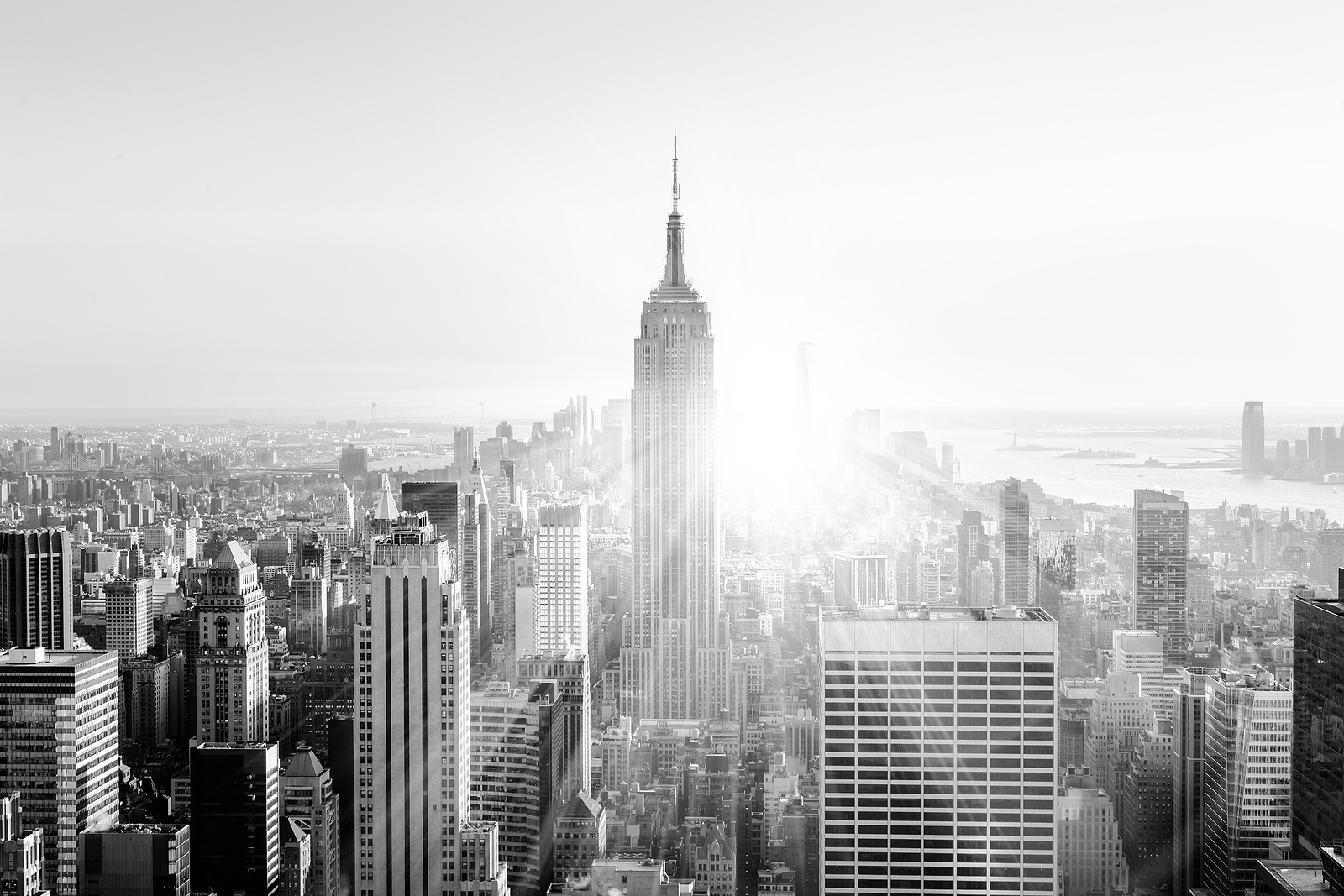Andy Warhol partnered with the filmmaker Jonas Mekas to make a stationary shot film of the Empire State Building on July 25, 1964. The duo screened an 8-hour-long film from a single position, showcasing how this building, created in the best tradition of Art Deco, arises from darkness in the first rays of sun in the morning. Released in 1964, Andy Warhol’s “Empire” faced mixed reviews due to the fact that it showcases nothing but the building’s show-motion footage. Yet, it took a notable place in Warhol’s portfolio and produced a profound influence on the development of avant-garde cinema.
Andy Warhol’s “Empire”: About the Film
The 1964 creation by is a black-and-white silent art film. The artist personally set the camera’s specifications to capture the transformation of the Empire State Building throughout the night and at dawn. Though it was filmed at 24 frames per second, Warhol’s intention was to play it at 16 frames per second, thus extending the viewing time from 6.5 hours of initial screening to 8 hours and 5 minutes. It is also notable that Empire is the only film produced with the push-processing technique, which adds a unique “graining” effect to the image.
The esthetic value of the film can be found in many iconic elements Warhol utilized to create a unique record of the passing of time. The viewers are treated to an intricate evolution of the Empire State Building’s silhouette, which changes from complete darkness to fine detail and back to darkness, with subtle time pointers from the building’s floodlights and inhabitants’ activities.
The experimental film, like other cinematic creations by Warhol, has no evident narrative; neither does it feature any plot or characters. Yet, it reflects the artist’s fascination with the opportunities of cinematic viewing. It is also a tribute to the Empire State Building’s outstanding architecture and evolution of that time, with the floodlighting element introduced to the building’s upper 30 floors exactly in 1964.
The July 2024 Show
2024 is the 60th anniversary of the film’s creation, and the (MoMA) decided to commemorate this date by playing Andy Warhol’s “Empire” on the 80th floor of the Empire State Building. MoMA partnered with the Andy Warhol Museum and the Empire State Building Observatory Experience to arrange the event. The enigmatic, enchanting movie played on July 25-28, from 9am to midnight, to share Warhol’s unique vision through the cinema experience.




